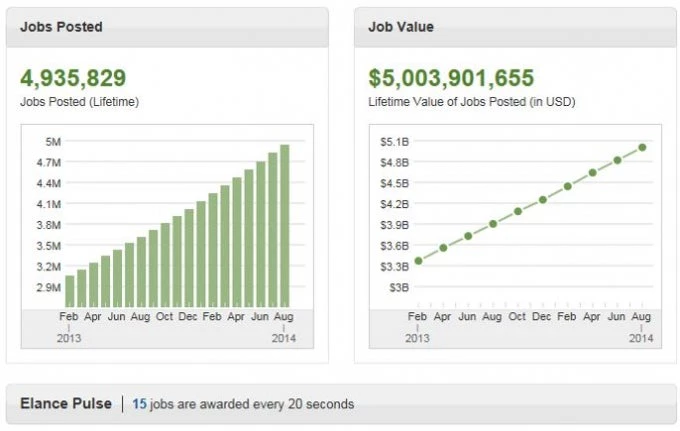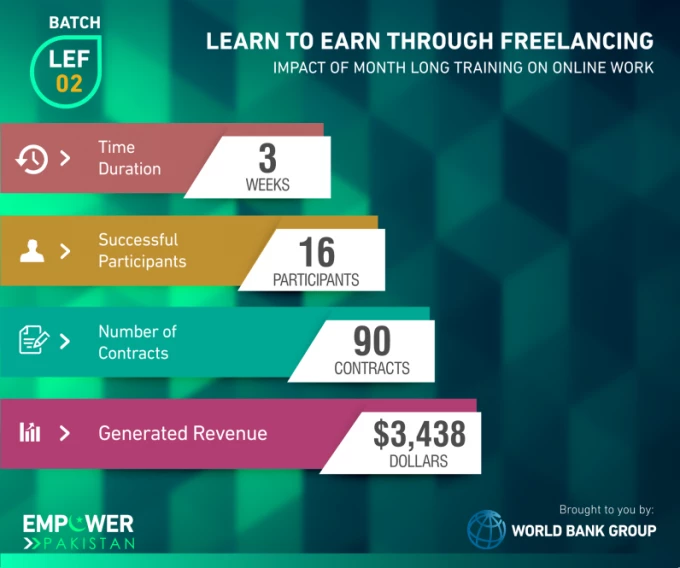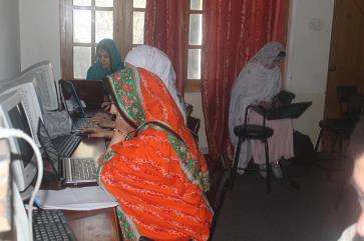The vibrant city of Peshawar is getting ready to host the 2nd Digital Youth Summit (May 7-9, 2015, Shiraz Arena). Co-organized by the KP IT Board, Peshawar 2.0 and the World Bank, the Digital Youth Summit is a tech conference and startup expo gathering participants from Pakistan and all over the world passionate about tech entrepreneurship. While there is a lot of excitement about how technology fuels entrepreneurship, there has also been a quiet and steady rise of the ‘e-lancer’

Accessed on April 10, 2015
What is e-lancing? Exactly what you think it is. E-lancing is free-lancing for the digital age. Powered by ICT tools and the internet, e-lancing allows independent tech savvy workers connected to the internet access to the global labor market. Over the past years, even ‘physical’ workspaces have started to get virtual through tele-conferencing, video meetings etc. Many are very convinced by the benefits of ICT-enabled remote work and the flexibility that comes with it while others caution that it may not be the holy grail people tout it to be. However everyone is in agreement about one thing: ICT reduces barriers and distances making the global market more accessible than ever.
All you need is a computer and an internet connection. Thanks to ICTs, e-lancing is booming and there are multiple platforms where employers and e-lancers can “meet” and do business. These virtual marketplaces functions like a Craigslist for skilled tasks: employers post tasks and e-lancers respond to posted tasks and submit offers. Once selected, the e-lancer starts working remotely for his/her client. In most cases, the e-lancing platforms remain the center for all main interactions (payments, reviews, messaging, etc.) between the employer and the on-line worker so to ensure transparency and avoid frauds.

Facebook page to present some of the
preliminary results of the training on e-lancing.
So what does a typically successful e-lancer look like? One of the advantages of e-lancing is that there are almost no limits to the types of services that on-line workers can provide. E-lancing platforms offer jobs in many areas of expertise ranging from website development, to coding, to remote assistant services, to content writing, graphic design, data management and much more; whether you are a very advanced coder or you have just begun learning the magic tricks of search engines, there is a client who requires yours skills (interesting reading: Hacking Elance: How to make money freelancing – source Entrepreneur.com, April 6, 2015).
Pakistani e-lancers are well aware of this opportunity: Pakistan currently ranks #4 on Elance.com at global level, with more than 170,000 register e-lancers. This has changed the game in terms of how we create sustainable and creative opportunities for youth in Pakistan. The World Bank has partnered with Women’s Digital League, Empower Pakistan and KADO – Karakoram Area Development Organization, to explore if e-lancing can be a viable income-generating opportunity for the youth of the province of Khyber Pakhtunkhwa (KP).
Women’s Digital League has been implementing a pilot training for 30 women in Peshawar with the goal of showing that women from different backgrounds can acquire skills to work on line, make money and work on a flexible schedule (Visit their Facebook page for more details about their progress). In a country with low rates of female labor force participation and restrictions on how women access the public space, this goal is especially meaningful.
At the same time, Empower Pakistan, a youth-led organization has been training university graduates. “ We haven’t even completed the training sessions and our participants are already making money; some of the trainees have secured so many tasks that they have to hire more youngsters: it is impressive”, expressed Sajid Shah, CEO of Empower Pakistan, after receiving a note from trainees describing their learning experience.

training program organized by KADO.
These training programs are part of a series of initiatives of the World Bank and the KP IT Board to leverage technology for income-generation and youth inclusion. So if the IT free-lancing wave is already happening, how can we use platforms such as the Digital Youth Summit to make it a tool to empower young people in Pakistan and across the world? Watch this space for more!
Would you like to hear more from the three partner organizations and learn more about e-lancing? Join the Digital Youth Summit.


Join the Conversation